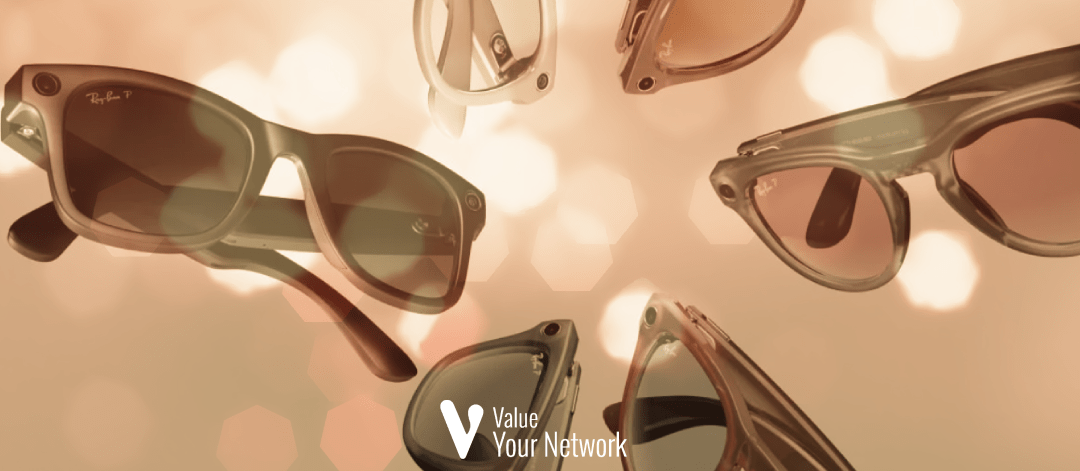Ray-Ban Meta revolutionizes connected eyewear! Discover how Meta and EssilorLuxottica are redefining augmented reality with innovative design and advanced features.
Smart glasses are no longer a futuristic gadget. With Ray-Ban Meta, Mark Zuckerberg aims to shake up the wearable technology market. With a sophisticated design and advanced features, these new connected glasses could well redefine our relationship with digital technology. Meta is looking ahead and plans to integrate innovations that will appeal to both athletes and technology enthusiasts. But can this announced revolution really supplant smartphones?
Ray-Ban Meta: a strategic partnership with EssilorLuxottica
For several years, Meta collaborates with EssilorLuxottica, an optical giant, to offer stylish and high-performance connected glasses. After the success of the Ray-Ban Stories, Meta strengthens this alliance with a new generation of glasses integrating cutting-edge technologies.
All Ray-Ban Meta are not just smart glasses. Their goal is ambitious: to combine style and performance to offer an immersive experience without compromising aesthetics. Unlike previous models, they will be lighter and more ergonomic, thanks in particular to a integrated central camera and a frame inspired by the model Sphaera d'Oakley.
Ray-Ban Meta: Meta's answer to Apple's Vision Pro?
Meta has never hidden his ambition to dominate the augmented reality market. However, the Apple Vision Pro, although revolutionary, remains very expensive ($3,499). Mark Zuckerberg criticizes this approach and relies on a different strategy: offer more affordable eyewear, although the new models will be more expensive than the first Ray-Ban Meta.
But then, What justifies this price increase?
The new Ray-Ban Meta are not just high-tech accessories: they are designed to gradually replace smartphones. Their main advantage? A discreet head-up display, allowing you to see notifications or photos without taking out your phone.
Smart glasses for athletes: a new market for Meta
Meta does not intend to stop at classic glasses. The company plans to launch a version specially dedicated to athletes. This model, designed under the brand Oakley, will integrate a performance monitoring in real time, ideal for athletes and fitness enthusiasts. An initiative that could appeal to a new audience, notably thanks to Oakley's reputation in the world of sport.
Why this focus on athletes?
- Wearable innovation is exploding : Smartwatches have proven that real-time data is a powerful lever for athletes.
- Oakley is a reference brand : By combining Meta's know-how in technology and Oakley's expertise in sports eyewear, the firm hopes to appeal to performance enthusiasts.
- A need for expansion : Meta seeks to diversify its audience and does not want to limit itself to high-tech enthusiasts.
Huge ambitions… but challenges to overcome
While the outlook is attractive, Meta must overcome several obstacles to set the standard for smart glasses.
1. A price still too high?
Although Meta is betting on more affordable products than Apple's, Ray-Ban Meta new generation will cost twice as expensive as current modelsTo appeal to the general public, it will be necessary to prove that these glasses offer real added value on a daily basis.
2. A social adoption challenge
Wearing smart glasses all the time might still seem strange to many users. Meta will have to work on cultural acceptance of these devices, facilitating their integration into daily life.
3. Dependence on China and geopolitical tensions
The production of Ray-Ban Meta is largely based on components from China. A possible increase in customs duties by the US government could increase costs and slow mass adoption.
Ray-Ban Meta Success: More Than One Million Sales by 2024
Despite these challenges, the numbers speak for themselves. 2024more of a million Ray-Ban Meta were sold, a figure revealed by The Verge. Mark Zuckerberg sees even bigger: he hopes to achieve 5 to 10 million units sold for the third generation.
What are the drivers of this success?
- The Ray-Ban brand : A guarantee of quality and style that reassures buyers.
- The integration of Meta AI artificial intelligence : Based on the model Llama, it allows to optimize theuser experience and make glasses more useful.
- A global distribution network : Thanks to EssilorLuxotticaThe glasses are available all over the world.
Towards mass adoption or just a fad?
All Ray-Ban Meta paved the way for a new generation of smart glasses. However, several questions remain unanswered:
- Can they really replace smartphones within 10 years?
- Will the general public accept wearing smart glasses on a daily basis?
- Will Meta be able to make this technology financially accessible?
What is certain is that Meta does not count slow down its expansion in augmented reality. With strong sales growthand partnerships solid strategies and a aggressive marketing, Mark Zuckerberg's firm could well shape our digital future.
And you, would you be ready to replace your smartphone with connected glasses?

